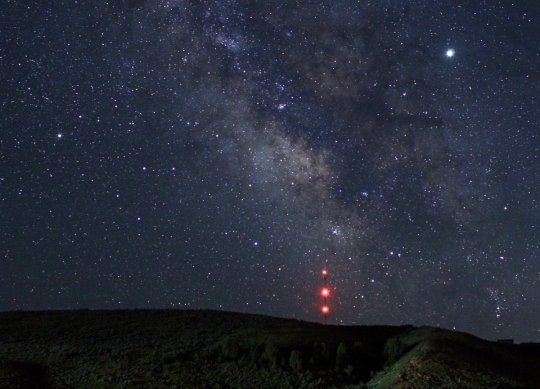
The night sky isn’t flat. If you traveled deep into this part of the sky at the speed of the radio waves leaving this tower, here are some places you could reach.
Jupiter: Travel time – 35 minutes, 49 seconds.
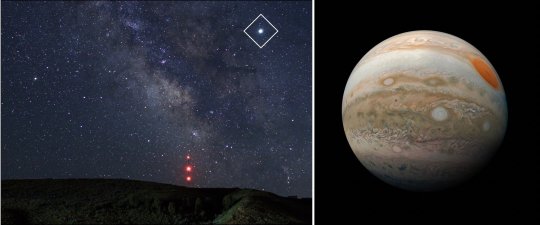
The closest object in this view is the planet Jupiter, brilliant now in the evening sky…and gorgeous when seen up close by our Juno spacecraft. Distance on the night this picture was taken: 400 million miles (644 million kilometers).
Saturn: Travel time – one hour and 15 minutes.
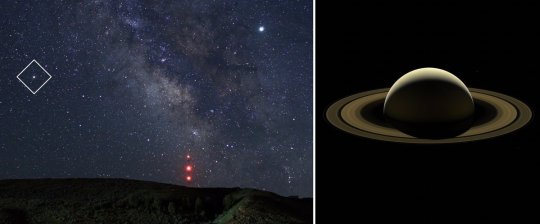
The next closest is Saturn, another bright “star” in this summer’s sky. On the right, one of the Cassini spacecraft’s last looks. Distance: 843 million miles (1.3 billion kilometers).
Pluto: Light-speed travel time from the radio tower – four hours, 33 minutes.
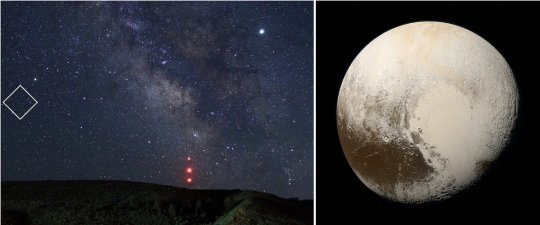
It’s not visible to the unaided eye, but Pluto is currently found roughly in this direction. Our New Horizons space mission was the first to show us what it looks like. Distance: more than 3 billion miles.
F-type star, HD 1698330: Light-speed travel time from the radio tower – 123 years.
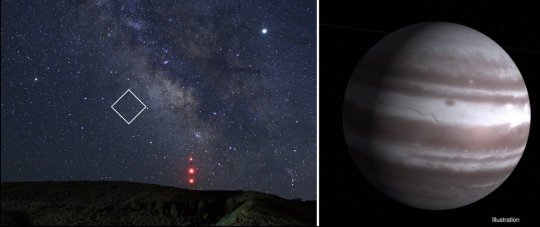
Within this patch of sky, there’s an F-type star called HD 169830. At this speed, it would take you 123 years to get there. We now know it has at least two planets (one of which is imagined here) — just two of more than 4,000 we’ve found…so far.
The Lagoon Nebula: Light-speed travel time from the radio tower – 4,000 years.
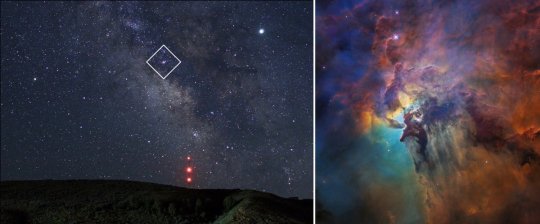
If you look closely, you’ll see a fuzzy patch of light and color here. If you look *really* closely, as our Hubble Space Telescope did, you’ll see the Lagoon Nebula, churning with stellar winds from newborn stars.
Black hole, Sagittarius A*: Light-speed travel time from the radio tower – 26,000 years.

In 26,000 years, after passing millions of stars, you could reach the center of our galaxy. Hidden there behind clouds of dust is a massive black hole. It’s hidden, that is, unless you use our Chandra X-ray Observatory which captured the x-ray flare seen here.
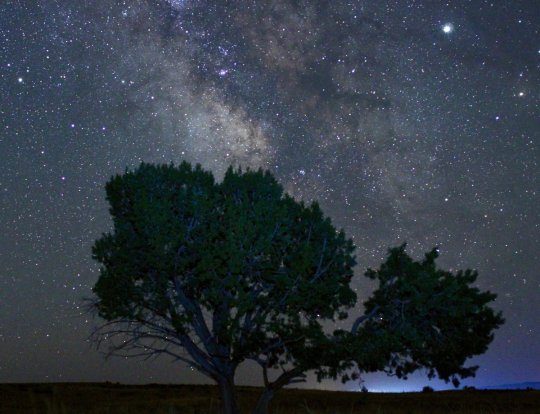
The next time you’re under a deep, dark sky, don’t forget to look up…and wonder what else might be out there.
Make sure to follow us on Tumblr for your regular dose of space: http://nasa.tumblr.com.






Комментариев нет:
Отправить комментарий